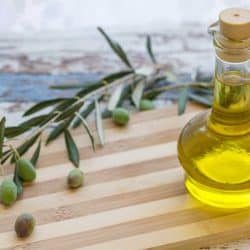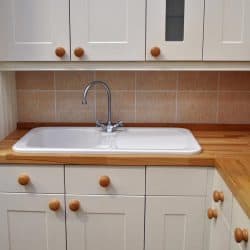Cutting boards and butcher blocks are both excellent wooden kitchen items with versatile uses. But it has you thinking, what are the differences between the two? We've done the work to bring you everything you need to know about these two items.
The main differences between cutting boards and butcher blocks are that cutting boards are portable while some butcher blocks are not. Another difference is that butcher blocks are typically made of end-grain rather than edge grain. This means that the end of the wood fibers is actually exposed. Butcher blocks also tend to be thicker than cutting boards. Since butcher blocks are most often used for cutting meat, they are larger than standard cutting boards.
Want to know more about the difference between cutting boards and butcher? Keep reading! We'll also discuss what the best wood is for a cutting board, whether or not you can use a butcher block as a cutting board, what wood is used for butcher blocks, whether or not wooden butcher blocks are sanitary, and more.
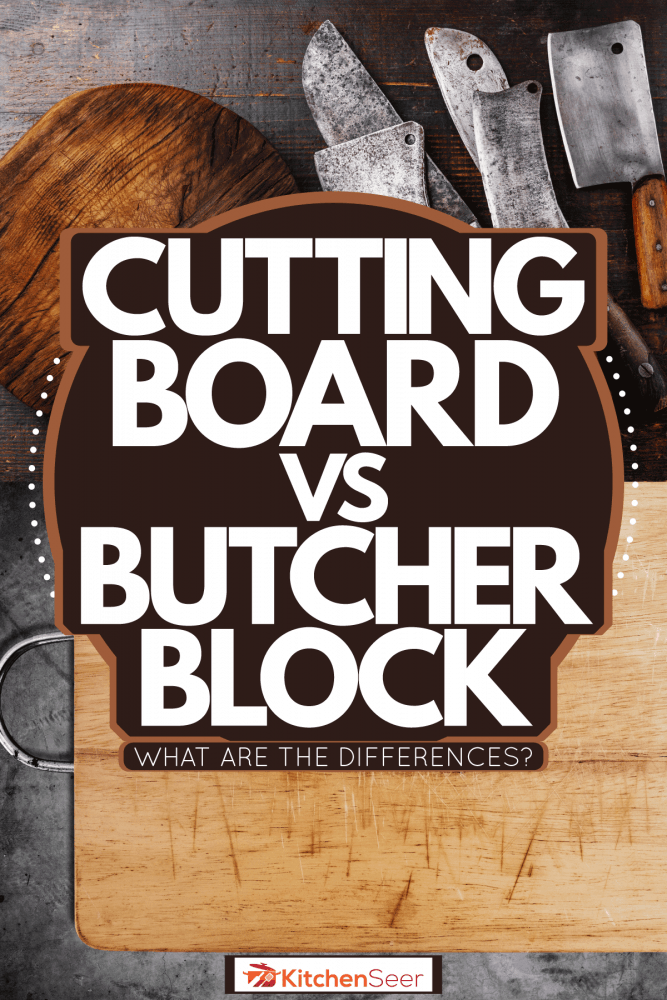
All About Cutting Boards
Although cutting boards can be made of wood, the other majority of them are made of glass, steel, marble, bamboo, or plastic. They vary in size, too. Cutting boards can be used for multiple purposes. They are great for when you need to cut up vegetables, fruit, or boneless meat.
Knives might end up damaging your cutting board depending on what yours is made out of. While wooden butcher blocks have the wood grain exposed, cutting boards typically have the grain run the length of the board. Cutting boards are more commonly seen in the kitchen but just do not work well if you want to butcher meat because they are not thick enough for such a process.
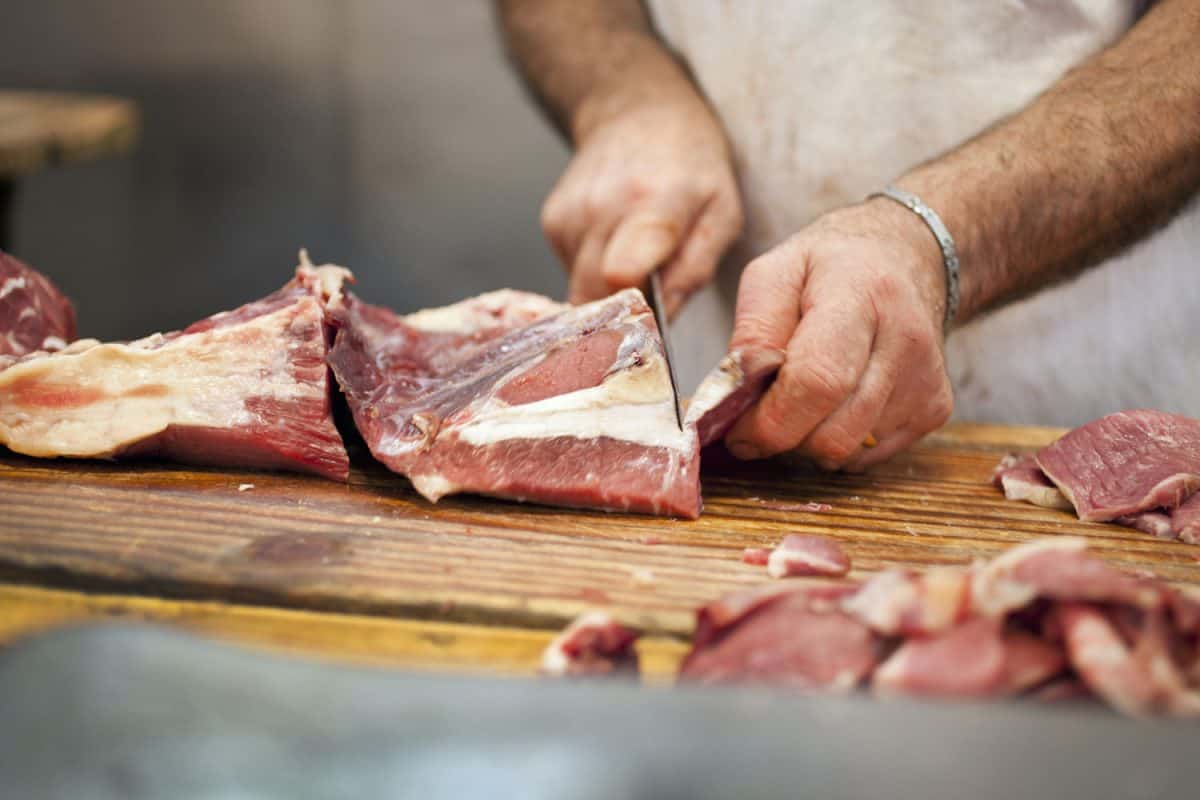
Because wooden cutting boards are usually made with edge grain rather than end grain, they require less maintenance. This is because they soak up less moisture. Both end grain and edge grain are visually aesthetic. It is more of a personal preference than anything.
What is the best wood for a cutting board?
Even though cutting boards can be made from bamboo or plastic, wood is long-lasting. Maple is the best choice of wood for a cutting board. Beech is another great option because it is a type of hardwood that is scratch-resistant. Teak is also a type of hardwood but will dull your knife blades faster than maple or beech will. Walnut is an alternative wood for cutting boards as it does not stain as easily as the lighter-colored woods. Walnut is more resistant to bacteria than teak. They all need to be conditioned though.
Click here to see this maple cutting board on Amazon.
When considering choosing the right cutting board for you, think about the differences between edge grain and end grain. Edge grain boards do not need the same amount of upkeep as end-grain boards. Cutting and chopping can be done on just about any type of wooden surface. The only problem is, edge grain shows knife marks more than end-grain and it wears down more quickly.
All About Butcher Blocks
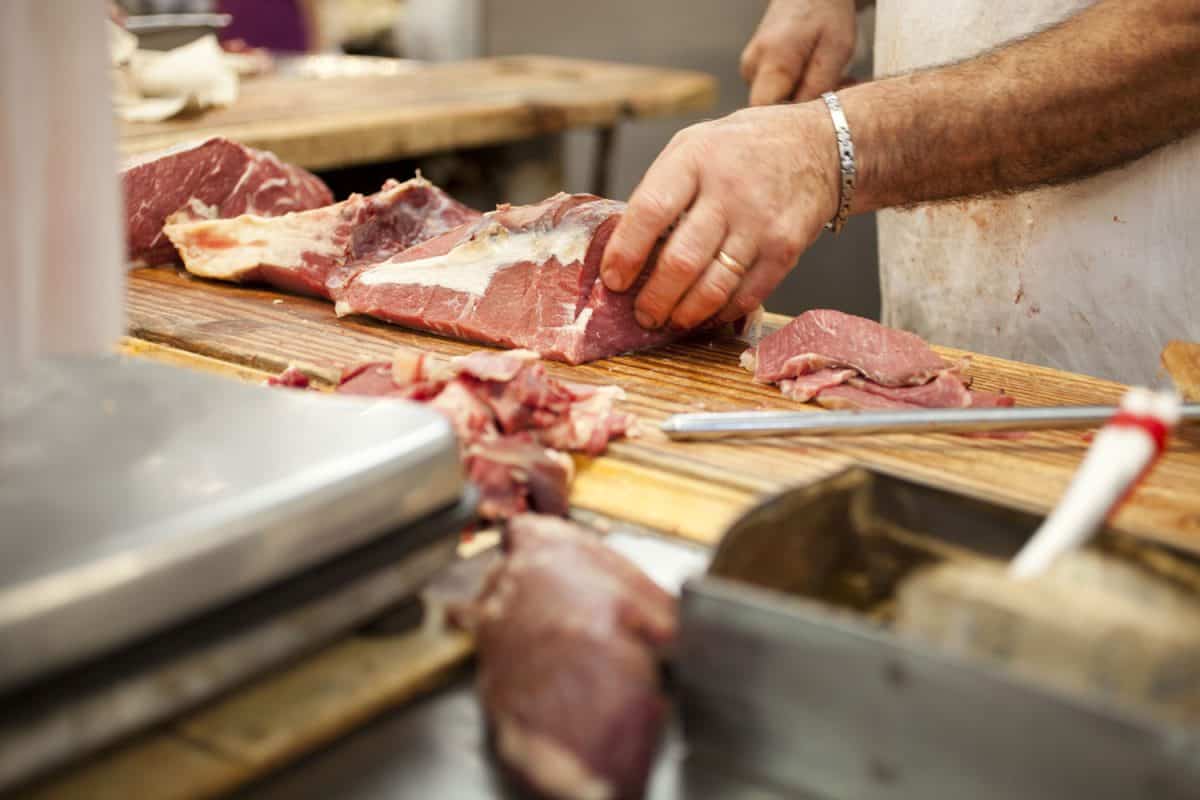 Most butcher blocks are made of wood or stone. Butcher blocks are best for chopping meat, both bone-in and boneless. They tend to be heavy and at least one and a half inches thick. Weight is an essential factor because you need your butcher block to stay in place while you are cutting your meat. The thickness is important because meat has to be quartered, deboned, chopped, and/or fileted. All of these tasks require a bigger surface area than a typical cutting board will provide.
Most butcher blocks are made of wood or stone. Butcher blocks are best for chopping meat, both bone-in and boneless. They tend to be heavy and at least one and a half inches thick. Weight is an essential factor because you need your butcher block to stay in place while you are cutting your meat. The thickness is important because meat has to be quartered, deboned, chopped, and/or fileted. All of these tasks require a bigger surface area than a typical cutting board will provide.
Because butcher blocks are made with end grain, they are resistant to cuts and scarring. The density of the wood fibers push back into place over time which makes this type of wood self-healing. End grain is usually a bit more expensive but worth the extra penny in the long run.
Butcher blocks come in all shapes and sizes from about five-inch round boards to kitchen islands. Preferably you would want the top of your kitchen island to be made from stone or concrete to be able to use as a butcher block.
Can I use a butcher block as a cutting board?
You can use a butcher block as a cutting board but not vice versa. Cutting boards are not as thick so they will crack if used improperly. These are made for slicing, dicing, chopping, and julienning rather than chopping meat.
The reason you can use a butcher block as a cutting board is that butcher blocks are made to be thick and durable. You need butcher blocks to be able to withstand the butchering of meat while the use of cutting boards is pretty universal.
What wood is used for butcher blocks?
The best kinds of wood for countertops or butcher blocks are maple, oak, cherry, walnut, birch, and teak. Maple is a hardwood with a clear grain. It is also more inexpensive than some of the other options. Cherry and red oak are visually appealing because of their rich color. Any of these would be a great choice for your butcher block.
Click here to see this maple end grain butcher block on Amazon.
Are wooden butcher blocks sanitary?
Wood is porous which means wooden butcher blocks have the potential to hold in more germs than some other options. You should clean your counter or butcher block every time it is used. This can be done with mild soap and warm water or a water-vinegar mixture. Distilled white vinegar is a disinfectant that kills bacteria and viruses.
Because wood is absorbent, you need to be wary of mold growing on your raw wood. You have to be careful and take this seriously. Chlorine bleach can be used to remove mold, but needs to be allowed to dry, should be cleaned with water, and sanded after.
Should you seal butcher block?
You should treat your butcher block with mineral oil in order to protect the natural wood. Using sandpaper is beneficial because you can fill in any nicks or scratches that have happened over time. This should be done at least once a year, maybe more often if you use your butcher block or countertop as a butcher block often. The reason for sealing your butcher block is to keep it from drying out and from staining.
Check out this mineral oil on Amazon.
Oil polyurethane works well for sealing countertops. This is because it dries into a plastic film adding a layer of protection between your knives and wood. Fortunately, polyurethane can be sanded down if there are scratches and then replaced.
In Closing
There are a few differences between cutting boards and butcher blocks. The biggest differences are the size, weight, thickness, and purpose. Butcher blocks are heavier and thicker because they are used for butchering meat. Cutting boards are typically used for cutting smaller food items such as fruits and vegetables. If you attempt to chop meat on a cutting board, it will most likely crack. Maple is a great choice of wood for both butcher blocks and cutting boards.
Before you go, check out the related following links about butcher blocks and cutting boards:
What Oil Is Best For Butcher Block Or A Cutting Board?
How Much Do Butcher Block Countertops Cost?




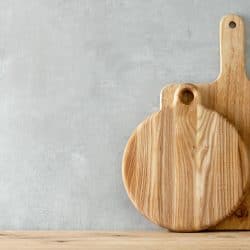
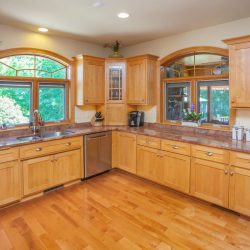
![A modern kitchen with a butchers countertop and a hanging spice rack on the wall, How Much Do Butcher Block Countertops Cost? [By size, type, grain and brand]](https://kitchenseer.com/wp-content/uploads/2020/08/A-modern-kitchen-with-a-butchers-countertop-and-a-hanging-spice-rack-on-the-walll-250x250.jpg)
![Raw meat assortment - beef, lamb, chicken on a wooden board, Can You Cut Meat On A Wood Cutting Board? [Raw And Cooked]](https://kitchenseer.com/wp-content/uploads/2021/06/Raw-meat-assortment-beef-lamb-chicken-on-a-wooden-board-250x250.jpg)
